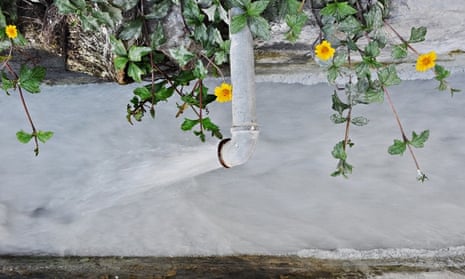When I was asked to moderate a panel on the water and energy nexus in a circular economy at this week’s World Water Week, I was skeptical. As a veteran of the conference, I have heard a fair number of buzzwords over the years. Many die before making the transition from theory to practice. How will the new fad – these circular models – improve a company’s water management?
Circular economies, the theory says, produce virtually no waste, as all raw materials are re-used and recycled continuously to form a closed loop. It’s a dramatic shift from our current linear economy, in which we take, make, consume and dispose, drawing regularly on our natural resources to create products that eventually end up as trash.
From a conservation perspective, a closed loop system is obviously better for the environment. But is that it? Does it really have the potential to transform business markets?
It might. When circular economy thinking is applied to business operations, it is surprisingly synergistic to water stewardship.
For both water stewardship and circular models, efficiency isn’t the end game. Yes, it’s important to reduce the water required to make and dispose of products. Water efficiency also tends to carry additional benefits, such as increased profits and energy savings. But from a natural resources management perspective, there’s much more to do.
So you saved water. Where did it go? Is it actually going back to people and nature, or is the factory next door just using more? Both circular models and water stewardship encourage holistic water management.
During the panel, a familiar weakness also emerged. The discussion focused mostly on how businesses can change the things they control: product design, raw materials required for manufacturing, waste treatment options, etc. In the early days of water stewardship, the companies WWF worked with would also fall back on discussing only what they controlled directly.
It’s time to move beyond this comfort zone.
And there may be momentum to do just that. Earlier this summer, the European Commission issued proposals for legally binding measures that would increase recycling and phase out landfilling, essentially transforming the EU into “a lean circular economy.”
We know there is a business case for water stewardship. Similarly, the EU commission claims that a circular economy could save EU companies around €600bn annually.
There are lessons from water stewardship that circular economy advocates can learn. There are also lessons water stewardship experts can learn from them. If this trend truly takes hold, tools such as the International Water Stewardship Standard can help companies transition to closed-loop systems.
Applying water stewardship philosophies to circular models – and vice versa – may be the push we all need to get more companies thinking about sustainable resource management, instead of hoping efficiency will save us.
But even as the synergies continued to emerge through our panel discussion, I remained somewhat skeptical. It’s great that we have different tags like “water stewardship”, “circular models,” and “nexus” to help us frame and understand these complex debates. However, if we don’t turn these words into actions, they’ll live and die as buzzwords.
We need to use them to engage financiers, to convince them to shift from project-based financing to systemic financing. We need to inspire people to think differently about infrastructure and system-wide solutions. And we need to encourage businesses to consider carefully the full life cycle of their products.
Circular economy thinking has the potential to do this, but it needs champions. WWF was an early champion of water stewardship – a concept that has taken hold and is now starting to yield tangible outcomes in river basins around the world. Circular economics, if brought to life outside of panel discussions, could also be a boon for freshwater conservation.
Read more stories like this:
- As water crisis deepens, California finally passes groundwater regulation
- New technology uses social media to keep track of water levels
- Advertisement feature: Tackling the growing global problem of phosphate contamination in water
The water hub is funded by Grundfos. All content is editorially independent except for pieces labelled advertisement feature. Find out more here.
Join the community of sustainability professionals and experts. Become a GSB member to get more stories like this direct to your inbox
